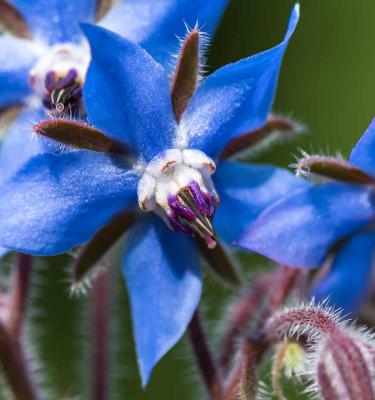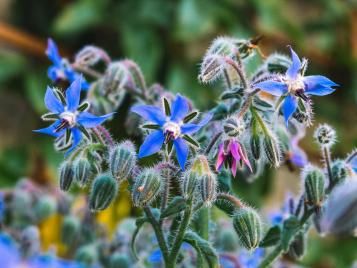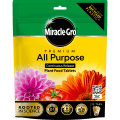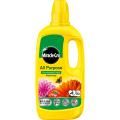

How to grow borage
Borage, or ‘starflower’, is an easy-to-grow herb with edible flowers and leaves. Originally hailing from the Mediterranean, borage is now a mainstay of British gardens, seeding itself and growing freely once established. It looks most at home in a traditional cottage garden, and is fabulous for attracting bees and other pollinators.
Types of borage to grow
All cultivars of Borago spp. have visibly hairy stems and leaves. The star-shaped flowers are usually blue-purple and made up of five pointed petals. Think those flowers look familiar? That’s because borage is closely related to the forget-me-not (Myosotis spp.), another popular cottage garden plant.
Let’s look at the different types to try out:
- Common Borage (Borago officinalis). Also known as tailwort and talewort. By far the most prolific variety of borage, the flowers are a deep blue colour.
- Creeping Borage (Borago pygmaea). Also known as pygmy borage, this perennial low-growing variety is much shorter than annual cultivars, reaching just 30cm (1') tall. The tiny light blue flowers have a notably pleasant fragrance.
- Variegated Borage (Borago officinalis ‘Variegata’). A blue flower with an attractive white mottling on the edges of the green foliage.
- White Borage (Borago officinalis ‘Alba’). A white-flowered cultivar, not seen very often and great alongside other white flowers.

What you’ll need to grow borage
- Borage seeds.
- Watering can.
- Trowel.
- Premium All Purpose Continuous Release Plant Food.
When to plant borage
Sow seeds directly in the soil from late April onwards, once the risk of frost has passed. Alternatively seeds can be sown in March, under cover, and then pricked out to larger containers before being planted out.
Where to plant borage
Borage will typically reach about 60cm (24") high, although it can reach 1m (3'), so is perfect for the middle of a border. It gets quite bushy, so make sure it isn’t so close to other smaller plants that it crowds them out. Choose a sunny location with well drained soil.
Although borage is most suited to growing in the ground, it can also be grown in a container. This allows plants to be moved around the garden. Fill the container with an all purpose compost such as Peat Free Premium All Purpose Compost, and sow seeds directly.
How to sow borage
Borage is an annual and is easy to grow from seed. Make a shallow hole or trench no more than 2cm (1") deep. Then use a watering can to fill the hole with water and allow it to drain away. Sow seeds in the bottom of the hole or trench and lightly cover over with soil. Allow at least 30cm (1') between seeds.
What to plant with borage
Borage is the perfect companion plant to most homegrown edibles. It attracts pollinators, particularly honeybees, which will then head to nearby fruit and vegetables and pollinate them too. It should be planted near to but not amongst low growing vegetables, as it can shade them. Taller vegetables, such as climbing beans and sweetcorn, will benefit from borage being planted alongside them once they are big enough - the shade of the borage leaves will protect the soil from strong sun, helping to retain moisture in the soil.
Any plants prone to aphid infestations will enjoy having borage nearby, as it can draw attention from them and acts as a sacrificial plant. Just make sure the Borage is not planted directly next to your crops. Broad beans and runner beans are good candidates for this. Fruit trees and grape vines also benefit from having a pollinator-attracting plant nearby. Apple, pear and plum trees planted with borage around the main stem work well.
Caring and nurturing your borage
- Light: Provide with lots of direct sunlight if possible, although it will tolerate a little shade.
- Soil: This should be free-draining and light.
- Temperature: Borage is a hardy annual and will die back in frosts.
- Watering: Water regularly in very hot weather, although do not allow the plant to sit in overly moist conditions.
- Feeding: Borage will benefit in early summer from Organics All Purpose Granular Plant Food.
- Pruning: Leave dead flower-heads on the plant if you want it to seed across the garden for next season. If you do not want self-seeded borage popping up of its own accord, prune faded flower-heads throughout the flowering season. Remove pruned borage leaves to the compost heap, where its high nitrogen content will work as an accelerant to assist the breakdown of material. Cut back Borago pygmaea in the autumn simply to tidy it up. Always wear gloves when handling borage plants, as the hairy foliage and stems can irritate sensitive skin.
- Repotting: Borage plants do not like to be disturbed and have long root runs so are best grown again from seed each year.
Common pests and diseases with borage
Pests and diseases rarely bother borage - and when they do, plants are usually strong enough to be able to fend off the problem.
What are the small black aphids on my borage?
Blackfly is a common pest, smothering new growth in particular, and sucking sap from plants. Borage will withstand an attack of blackfly, and in fact it can be a useful sacrificial plant as the blackfly will head to it rather than to other more delicate plants. Encourage predators, such as ladybirds, and read our useful article for more information about how to handle an attack of blackfly.
What is the furry white coating on the leaves of my borage?
Powdery mildew is a fungal disease which can easily spread from other plants. It is usually a problem where there is poor airflow between plants. Prune or remove entirely any plants which are congested, and if problems persist, check out our guide to tackling powdery mildew.
What are the spiky caterpillars on my borage plant?
The wooly bear caterpillar is known to enjoy residing on low level foliage of borage. Tolerate them as they will predate unwanted pests, and encourage hedgehogs and birds to the garden.
Frequently asked questions about borage
How is ‘borage’ pronounced?
Don’t be tempted to elongate the ‘a’ in ‘borage’. It’s pronounced “Bor-ridge”, rhyming with “porridge".
How can I use borage?
Borage flowers look pretty used to decorate cakes, or frozen into ice cubes or an ice bowl for a fruity summer punch. The leaves are great added to a traditional glass of Pimms, adding a light and refreshing cucumber taste. Commercially it is used to make borage oil, which is used in herbal medicine.
Is borage good for wildlife?
Yes! Bees and butterflies love it.
Is borage invasive?
Borage will seed itself freely around your garden, but it’s easy to remove by hand, wearing gloves.
Is borage the same as comfrey?
Borago officinalis and Symphythum officinale are different plants, but are related to each other. Both are leafy green herbs that have lots of uses in the garden.
Is borage a perennial?
With one notable exception, Borago pygmaea, borage is an annual. However its tendency to produce and spread lots of seeds means that it is likely to appear year after year.
Key features of borage
| Botanical Name | Borago officinalis |
|---|---|
| Plant Type | Herb |
| Family | Boraginaceae |
| Light Exposure | Full sun |
| Soil pH | Neutral |
| Flowering Time | June - September |
| Flower Colour | Blue, pink or white |




